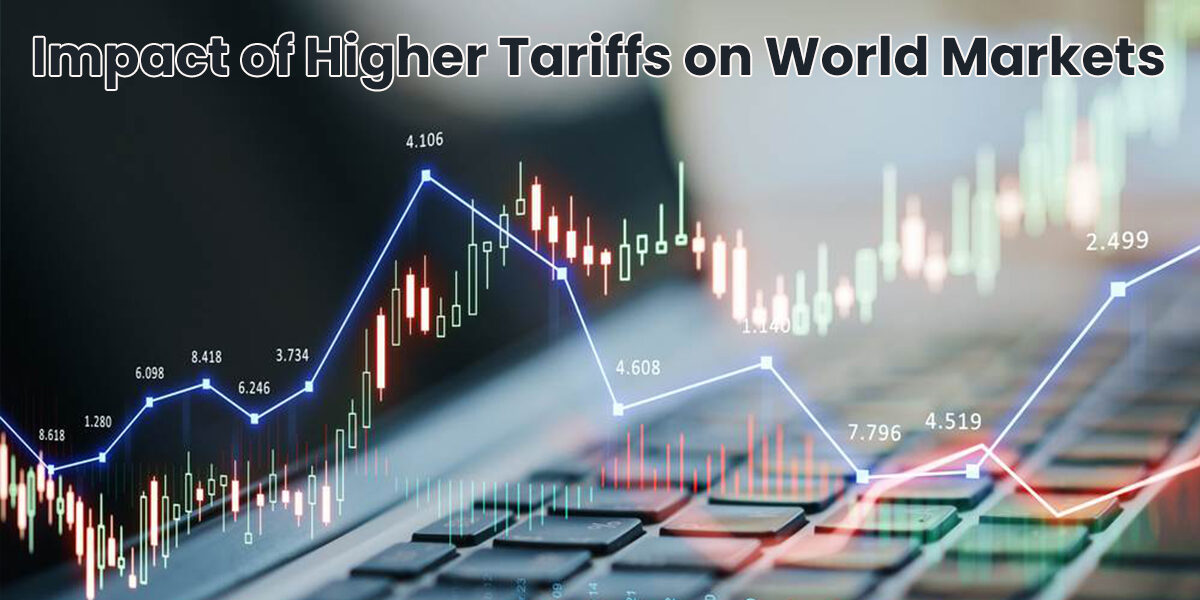When the U.S. adopted its America First policy, it triggered a global shift in trade dynamics through higher tariffs by the U.S. on key trading partners like China, the EU, Canada, and Mexico. These protectionist measures produced widespread inflationary pressures, unfavourable terms of trade, and broader financial volatility, affecting both emerging and advanced economies.
America first, higher tariffs & WTO snub
Under the America First policy, the U.S. rolled out steep tariffs—some as high as 30–50%—on imported goods under Section 232 and Section 301 authorities. This effectively contravened WTO commitments, including Most‑Favoured Nation (MFN) obligations. Economists warned that these unilateral moves amounted to a de facto snub to the WTO, undermining the multilateral system (CEPR).
Terms of trade & inflationary pressures
Tariffs act like consumption taxes: importers incur higher costs that eventually feed into consumer prices. Deloitte analysts predict that U.S. inflation could rise significantly due to these tariffs—upward of several percentage points in 2025—with consumers bearing the brunt of those costs (New York Post). At the same time, the U.S. terms of trade deteriorate: export competitiveness falls while import costs rise, squeezing both businesses and households.
Advanced economies’ growth strategy & agriculture
Advanced nations, including the U.S., rely partly on agricultural exports as pillars of their growth strategy. However, retaliatory tariffs from trading partners threaten export access. For example, China and the EU responded by slapping tariffs on U.S. farm goods, prompting reduced demand abroad and forcing U.S. exporters to find alternative markets or lower prices to stay competitive (World Economic Forum).
Arms‑Twisting diplomacy & International diplomacy
The U.S. deployed arms‑twisting tactics—threatening punitive tariffs unless partners negotiated tailored free trade agreements (FTAs). Countries like Japan, the UK, and Southeast Asian nations were pressured into bilateral deals, bypassing broader multilateral coordination. This move not only bypassed the WTO but reinforced U.S. bargaining power through strategic diplomacy (CEPR).
China and India’s role
In response, China and India pursued different strategies. China lowered import volumes and retaliated with its own tariffs, sharpening economic tensions. India, meanwhile, saw mixed outcomes: it was both victim of reduced exports to the U.S. and beneficiary as global supply chains diversified away from China, redirecting some investment and orders to India. Trade flows with India improved in select sectors like pharmaceuticals, textiles, and IT services (The Wall Street Journal).
Impact on Stock Markets
Global and U.S. stock markets reacted sharply. Following the Trump administration’s April 2, 2025 tariff announcements (“Liberation Day tariffs”), stock markets plunged into crash territory: the S&P 500 and Nasdaq entered corrections within days, marking the steepest declines since the COVID crash of 2020. Although by mid‑July markets recovered to record highs, analysts warned that lingering volatility and stagflation risk remained elevated (World Economic Forum).
Risks to free trade & WTO
The shift toward unilateral tariffs and bilateral FTAs comes at a cost to broader liberal trading systems. Called the “spaghetti bowl effect”, overlapping agreements undermine WTO principles, creating regulatory complexity and inconsistent trade rules (Wikipedia). Meanwhile, WTO leadership lamented declining adherence to multilateral norms, with some legal experts declaring the institution effectively sidelined by U.S. policy (CEPR).
Summary of global effects
- Inflationary pressures: Higher input costs ripple through supply chains, pushing up consumer prices globally.
- Unfavourable terms of trade: Export revenues stagnate while import costs rise, reducing real income.
- Stock market volatility: Panic selling and uncertainty destabilize equities, though resilience occasionally prevails.
- Distorted growth strategies: Advanced nations face disrupted agricultural and industrial supply chains.
- Diplomatic coercion through tariffs: Countries pressured into bilateral FTAs, bypassing multilateral institutions.
- Emerging vulnerabilities for India & China: India adapts supply routes while China retaliates, and both recalibrate strategy.
- Weakening of WTO and Free Trade ethos: Institutional erosion accelerates, replaced by ad hoc bilateralism.
Abbreviations
| WTO | World Trade Organization |
| EU | European Union |
| FTAs | Free Trade Agreements |
| MFN | Most Favoured Nation |
| S&P | Standard and Poor’s |
| UK | United Kingdom |
| US | United States |
| WEF | World Economic Forum |


